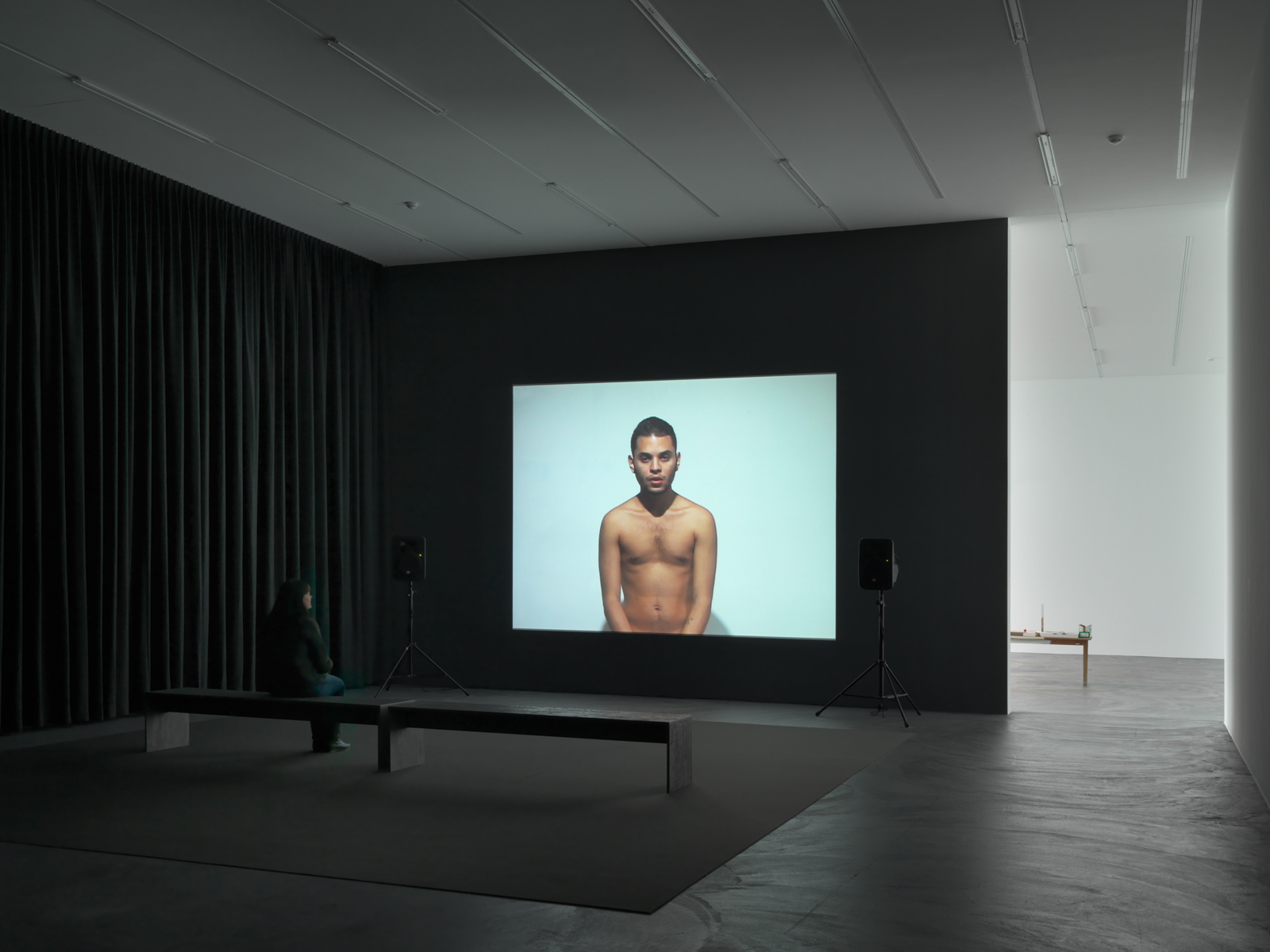Uri Aran
Here, Here and Here
The work of Uri Aran, who was born in Israel in 1977 and currently lives and works in New York, is pervaded by the interrogation and redefinition of structures and models of communication, the material world and interpersonal relationships. His visually idiosyncratic and disconcerting videos, drawings, assemblages, texts and sculptures hover on the boundary between the familiar and the strange. «here, here and here» is the artist’s first comprehensive solo institutional show and presents work groups created specially for the exhibition which encompass the entire medial range of his oeuvre. Aran brings his works in the Kunsthalle Zürich together in spatial assemblages, thereby creating spheres and systems specific to the individual spaces which, however, also relate to and interweave with each other.
Aran is a storyteller. His narratives revolve around longing, identity, home, the everyday, sentimentality and sadness, and also dislocation and displacement. By superimposing different temporal axes, linguistic structures and material categories, he reconstructs, extends and manipulates the view of what constitutes a story and subverts existing genres and hierarchies. Aran’s visual idiom ranges from screenplays and elaborately developed films about appropriated and decontextualised images and simple and familiar everyday objects – including, for example, eggs, bottle openers, passport photos and pizza boxes – which he processes, combines and hence unites to form ensembles comprising intimate and simultaneously disconcerting worlds. The materials used have something domestic and comfortable about them but, at the same time, act as indeciperable signposts in the narrative as the meaning of the individual components constantly remains unclear. Why are certain meanings ascribed to certain things? Which questions should be asked? In his works Aran explores the humour, poetics and manipulation of popular objects and triggers feelings associated with them in the viewers while simultaneously prompting them to doubt these objects, their relationships with them and their own experiences.
The new video work Chimpanzee (2013) draws the viewer into conversations involving individuals and couples which are shaped by everyday rituals and intimate experiences, the subjective logic and meaning of which are not completely accessible. We follow dialogues and narratives which appear to describe normal situations but which are equally pervaded by surreality, eeriness and absurdity. The protagonists address the camera but their texts are always directed at and used by an external narrator – perhaps the omniscient narrator of literature, the director or a semantic force that impacts on their experiences. Through the deliberate breaking of the expectation as to how a conversation develops or how one speaks about something, a voiding of syntax arises and draws attention to how the meaning of language is generated by complex processes and shaped by conflicts between individual and collective experience. This realm between the familiar and the obscure is also revealed to the viewer in the further course of the exhibition. In one space, the artist has assembled miniature landscapes in cardboard boxes, which are presented on tables. The next space contains assemblages of objects and sculptures arranged on a wall display that defines the space. At an initial glance, the sculptural installations look like chaotic arrangements of found objects; at a second glance, however, they appear as gestures of a microcosm structured by mysterious rules, which highlight the problem of organisation and categorisation. Collections of images, portraits next to animal pictures, plastic grapes and pizza boxes – the latter evoke the homely feel of a cosy family evening – run like a red thread through the entire exhibition and are also found in the drawings which Aran associates with new printing techniques. Through repetitions and a system of wide-ranging cross-references from a syntax of materials, the artist generates a visual rhythm that runs through the exhibition and is also transposed to the acoustic level with the repetition of the video soundtrack in the final space.





